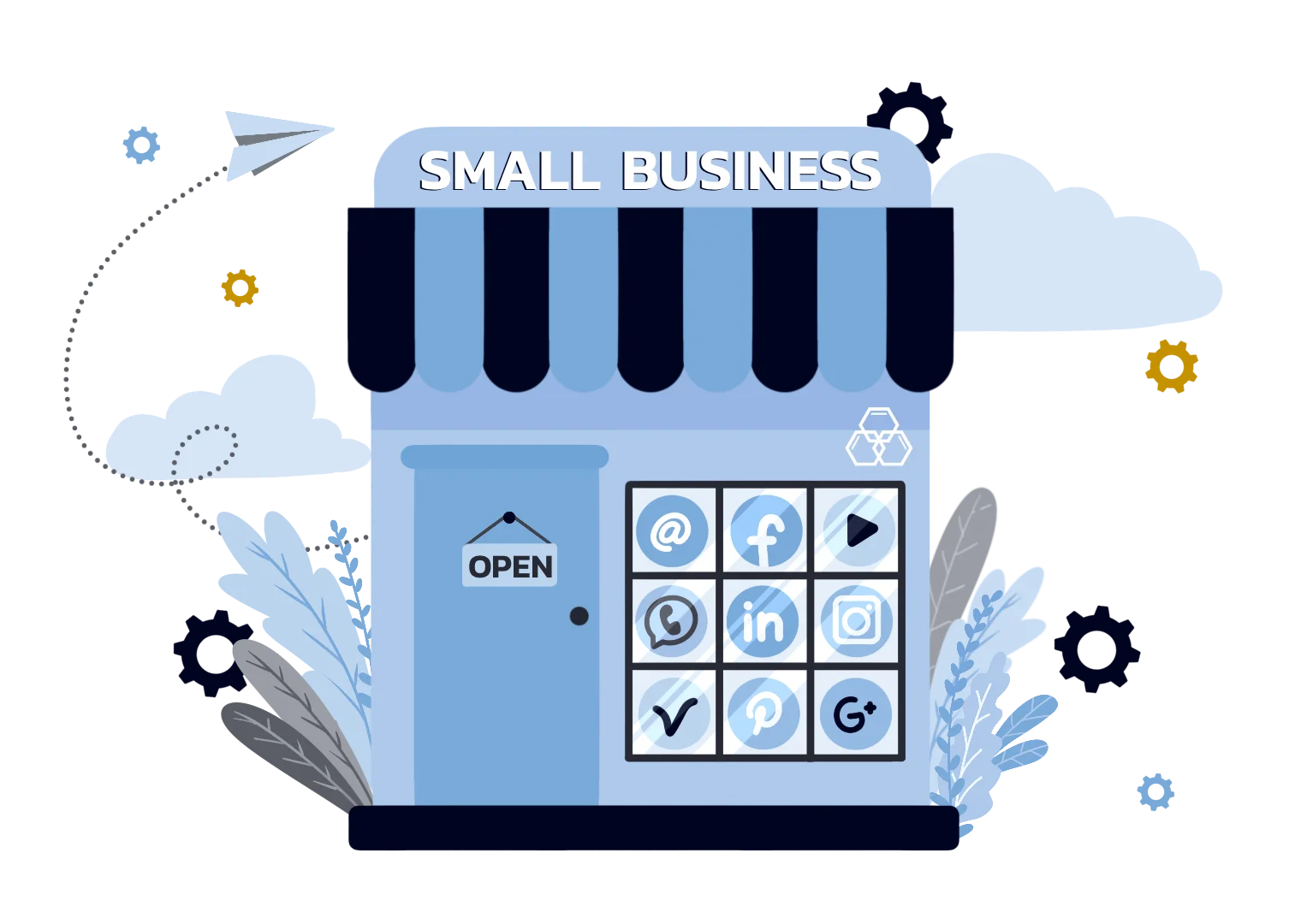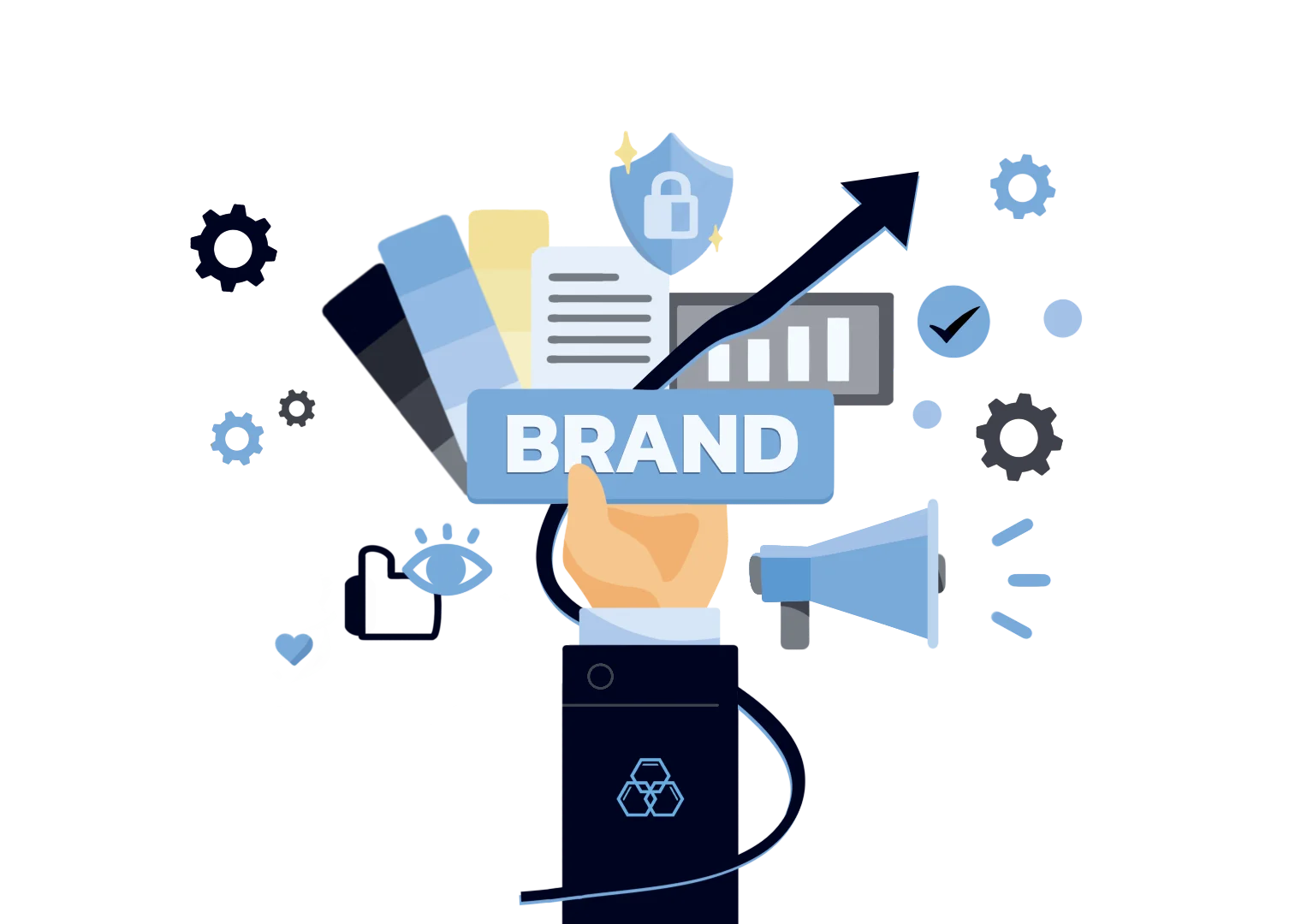We all know that communication skills are key to any successful business. But what happens when you're talking with your creative design team? They're inventive and passionate, but they also have their own language. Graphic designers are responsible for creating the look and feel of a company's product, website, or even building. And if you're an executive who works with graphic designers, you must understand this language so you can speak their lingo and make them feel comfortable working with you.
We've got you covered with this list of terms every executive should be familiar with when communicating with designers. Here are eight design process terms every executive needs to know to have effective communication with their designer.
8 Design Terms Executives Should Know
1. Contrast
Contrast, in design concepts, is a way to distinguish elements within a page or screen visually. It's the difference between two or more things.
Contrast is created by including visually distinct elements in terms of correct color choice, size, font, shape, and so on. For example, you might use a large font for your title and small font for your body text; or you might make all the text red except for one word in dark blue.
Some graphic designers say that it's important to have three different colors on any given web page—otherwise, it becomes too much for the eye to take in at once.
2. Composition and Layout
Composition is the arrangement of design elements that give your work a well-defined and easy-to-navigate structure. It's like the skeleton of your work because it gives your design structure and helps it hold itself together. It is called "layout" in graphic design and plays a significant role in creating an enjoyable experience.
When there's too much going on or when elements look messy, it can confuse people. On the other hand, when a layout is well designed, it makes it easy for people to understand what they're looking at and how they should interact with it.

3. Hierarchy
Hierarchy is a vital part of the design aesthetic because it helps organize information and make it easier to digest. Hierarchy is the organization of elements based on their level of importance for graphic designers to add structure, establish the visual elements and organization, generate impact, and make it easier for the viewer to navigate. In order to create a hierarchy in your creative design approach, you can use tools like size, positions, correct color choice, color contrast ratio, repetition, and alignment.
A good hierarchy gives your audience a clear path through your materials, while a bad hierarchy makes them feel lost and confused. Hierarchy is also an important tool for establishing order in space—you can use it to organize objects by size or position them above or below each other on the page according to their importance.
4. Mock Up
If you're in a fast-paced startup environment, you know that time is of the essence. That's why it's not unusual for development teams to use mock-ups to test their product design project before investing valuable time and resources since they can make changes before spending too much money on something that may not work out well for their business.
A mock-up allows you to experiment with different shapes and sizes for your products and the correct color and materials. It's also a great way to see how a product will look in real life, so you can make sure it looks good before making the investment of manufacturing it. Graphic designers also use mock-ups to try out different features—like buttons or handles—and get feedback from customers on how they would use them.
5. File Types
File formats help you encode art, graphics, and photos digitally. The common formats include AI,
EPS, PDF for vector graphics and GIF, JPEG, PNG, PSD, and TIFF for raster graphics.
Vector graphics use mathematical equations to represent lines and curves. Vector files are more flexible than raster files because they can be resized without losing quality. They're also great for large-format printing.
Raster graphics use pixels to represent small areas of color or gray tones. Raster files are useful when you need to save your file in a small space or if you want to edit the image later on a computer with photo-editing software like Photoshop or Gimp.
6. White-Space
When designing a website or any other visual presentation of content, you want to make sure that your visual design looks good and makes sense. But what can you do when there's too much going on?
White-space or negative space is the distance or space that doesn't contain any images, graphics, or text. It can help layouts breathe and make things look less cluttered. It's also helpful for creating a visual hierarchy in your design—you can use white space to draw attention to certain elements by putting them in front of others.
You can create white space by using margins between visual elements and leaving empty areas around them. You can also use negative space as a visual design element by putting text over pictures so that the letters take up all of the negative space instead of being placed on top of each other.

7. Widows, Orphans, & Rags
Widows and orphans are the lonely words that appear at the top or bottom of a paragraph, separated from the rest. Rags are the line breaks at the sides of each paragraph.
Widows and orphans can be very distracting—they look like mistakes! But even if you don't notice them, readers will. When you're writing, it's important to keep an eye out for these little typos to catch them before they get published.
8. Stock Content
Stock content allows you to add images to your website that are already licensed and ready to go. With stock photos, you can save time and money by using images that someone else has created—and they'll look just as good as photos you'd make yourself!
It's also an excellent tool for brands to use when launching or expanding their business. It is a quick, easy and inexpensive way to create content for your website, marketing materials, social media posts, and more.
The downside? If your audience notices that all of your images are from the same source, it can harm your brand's credibility.
Communicate better with your designer
Communicating with your designer is essential for the visual design and development process. This can be a challenge, though, as designers use many tools to communicate creative design decisions.
Although these eight terms may be confusing to project teams outside the design industry, hopefully, they will help you better understand how your designer works. Communicating with your graphic designers will help you get what you want faster and more efficiently, ensuring that your business is booming in the long run.






